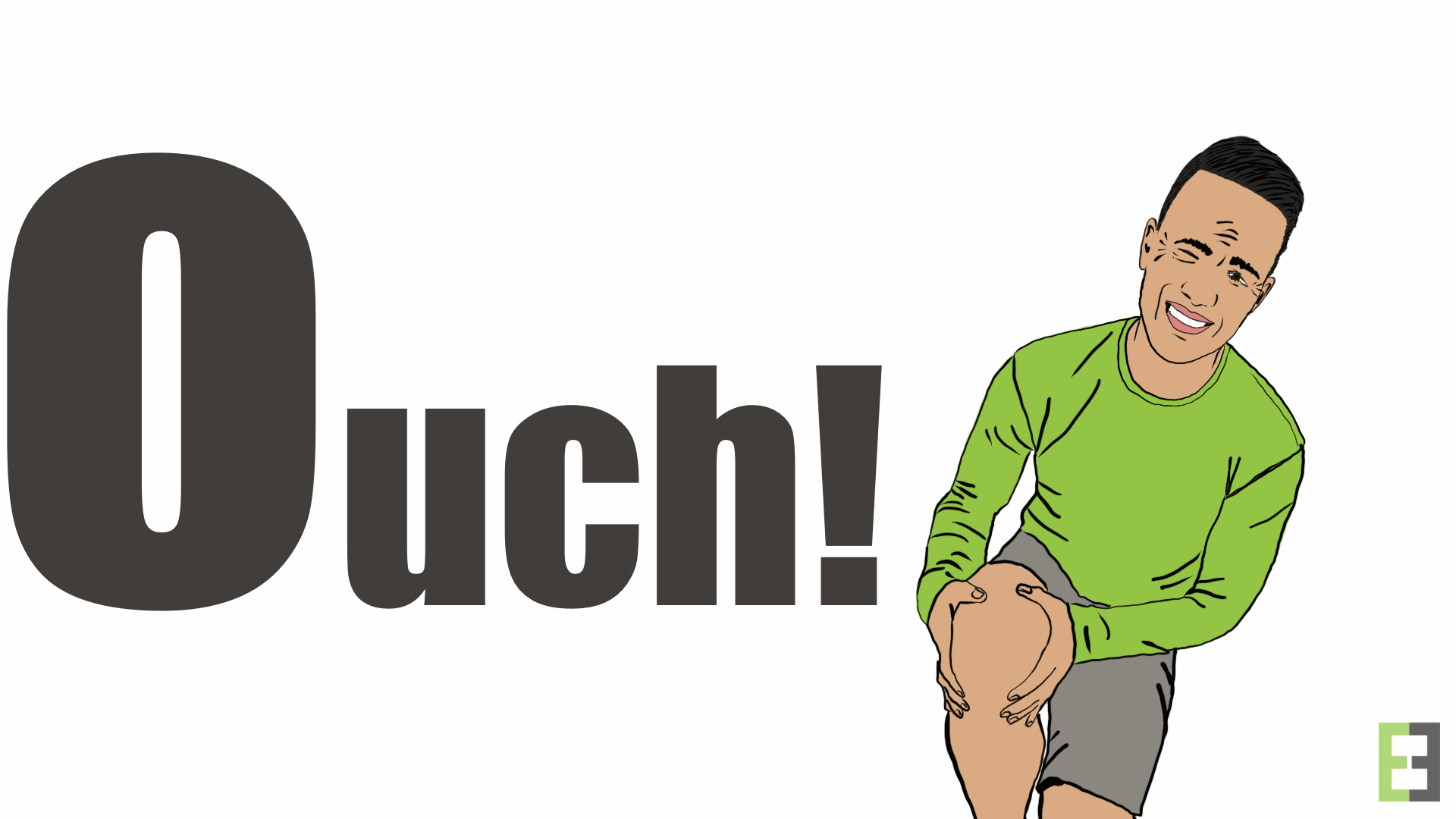
Knee injuries are the most common sporting injury [1].
Athletes, however, are not the only ones who suffer from problematic knees. In America, there are around 200 000 Anterior Cruciate Ligament (ACL) injuries recorded every year [6]. This statistic only accounts for one type of knee injury! Imagine what the tally would amount to if all the traumas were taken into account?This article explains why so many people are getting hurt and provide recommendations on how to fix the problems. All the explanations and examples are presented with illustrations for your viewing pleasure.
Introduction:
Everyone who has followed this series up until now, know that gravity is the force which makes bio-physical injuries possible. Location and severity of a knee injury depend on the magnitude of a force applied, coupled with the position the knee was in during that force. 'Position' is of greater importance to us, as force can only really do damage when the joint is misaligned [4].
So, when we understand gravity, we can put our joints in the best possible shapes to handle the loads.
This concept makes sense when we look at stress fractures, which are seldom caused by a single event, but, by many repetitions in a less than optimal position [1].
So without further ado, let's analyze the mechanisms behind our knee problems.
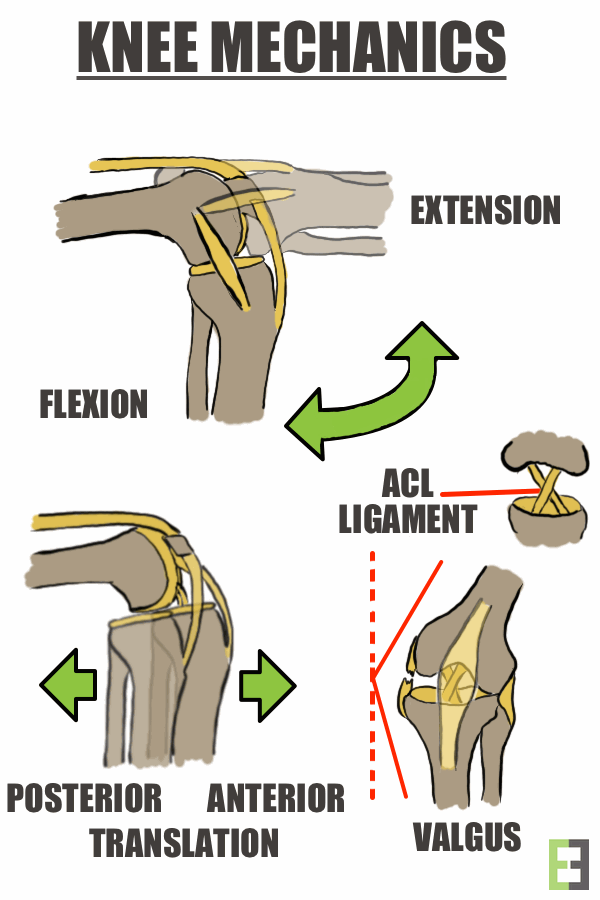
But first, have a look at the structure of the knee joint. It is only designed to flex and extend in a single plane. The ligaments and connective tissue help limit motion in other planes like rotation, valgus, varus, anterior and posterior translation.
Jumping and Landing
Jumping, squatting, lunging and hopping all require acceleration to propel our bodies upward. These exercises appear in our everyday lives and not only the gym. Whether we are picking something up off the ground, climbing up stairs or getting off of a chair, we practice some form of these movements every day.
For simplification, let's focus on the squat. Errors in this movement often extrapolate to the other motions described above.
Knee valgus error while generating force (acceleration):
Mechanism:
When standing up, the knees should resist adduction. This ‘coming together’ of the knees, causes a valgus position which is the number one attribute to ACL tears [4][6][7][8].
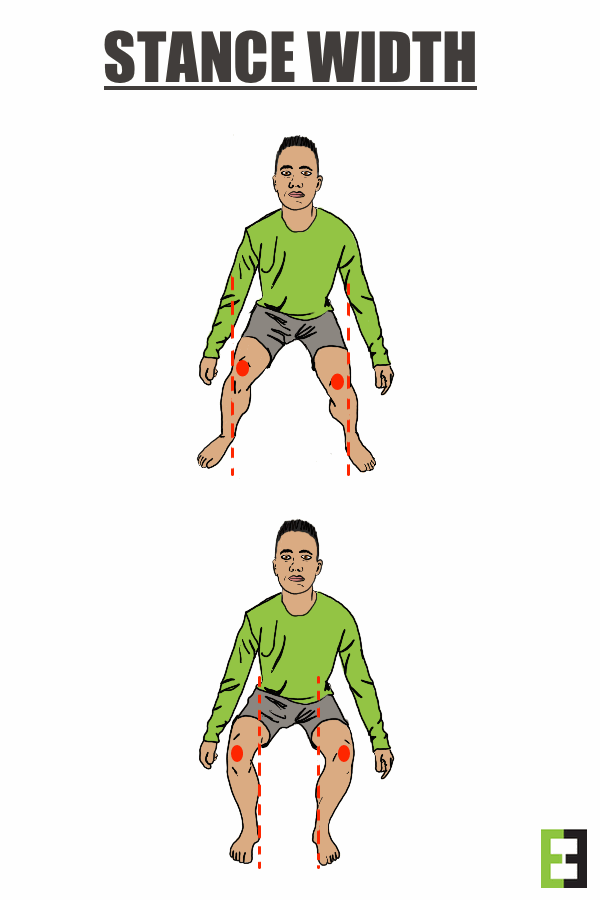
Cause:
The first mistake is stance width. Gravity will always pull your limbs towards your bodies center of gravity. As an example of this, lift your arms up to the side, as if you are flying. Now relax your arms. Notice how they always fall towards your midline. With this picture in mind, if the feet are too wide for the hips, the same thing happens. The difference here is the anchored feet, due to friction, causing only the knees to move inward towards the midline (valgus)
Fix:
Its simple, narrow your stance so that the feet are directly under the hips.
Cause:
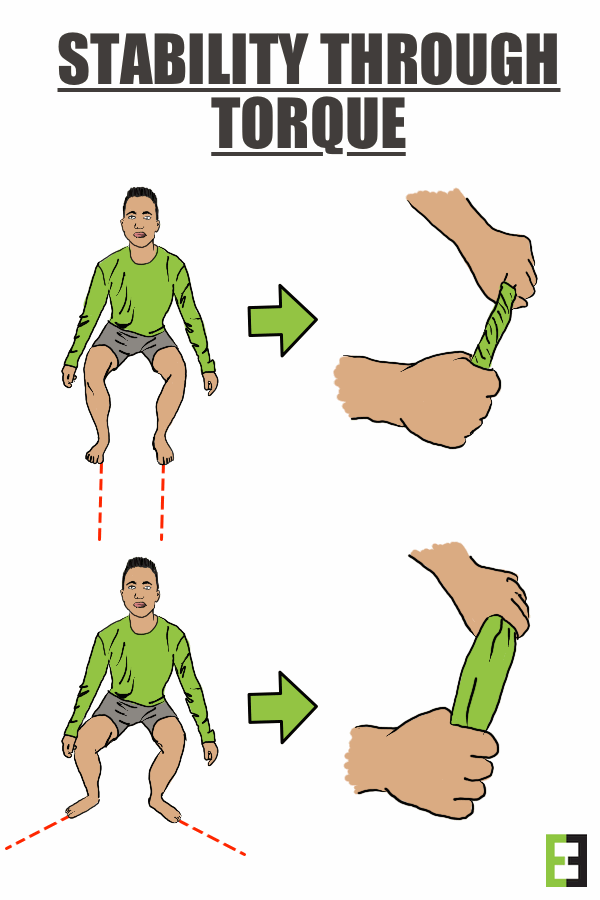
The second issue is ‘donald duck feet’ (toes out like a duck). You want to avoid this ‘Disney stance’ because it takes stabilizing torque out of the system. A good analogy is through twisting a wet cloth to compress the water out. This winding action bring all the fibers together to support one another. We want to generate the same torque in our bodily structure. We do it by leveraging from the friction created between the ground and the feet. This base of support allows us to wind the knees in the opposite direction (out) to create torque through the system. By standing ‘duck footed,’ you essentially unwind the structure, lose torque and the subsequent stability in the knees that goes with it [13].
Fix:
Make sure that no matter what activity you are doing, keep those feet pointed straight. I used to walk like a ‘duck, ’ and it took a lot of ‘awareness’ to break the habit. You can create this ‘awareness’ by informing family and friends to call you ‘Donald’ every time they see you duck-footed. (If your name is already Donald, then this won't work). Getting your loved ones involved may also build their awareness too.
Cause:
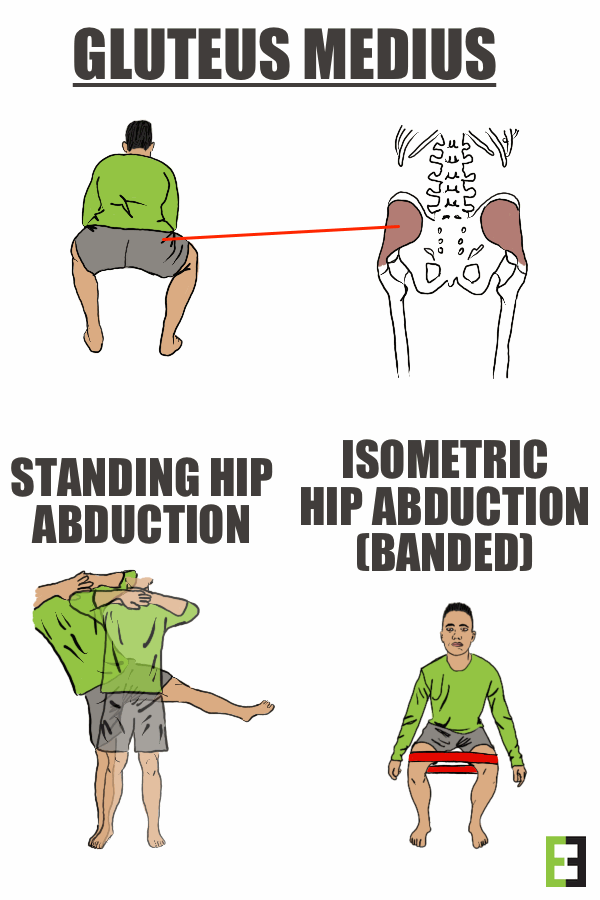
Building on the ‘cloth winding’ analogy, it's evident that you need two forces acting in opposite directions to create the desired effect. In the bodies case, the one force is friction at the feet, and the gluteus medius generates the opposing force. This butt-muscle externally rotates the femur (thigh bone) out, which keeps the knees from coming together [7][11]. So by now, you realize that the forces which stabilize the lower limbs derive from the downstream part of the leg (i.e., feet and ankle) and upstream in the hips (i.e., Glutes). It's no wonder that a study done one knee pain (Patellofemoral Pain Syndrome) found that hip strengthening was the best long-term solution for improving this type of injury [12].
Fix:
Again, ‘awareness’ is key here. The conscious effort of driving the knees apart will build the motor control to activate the glute medius muscles. Don't overdo this cue, to the point where the big toes start lifting off the ground, though. By making this mistake, you take force away from the feet and ankles. Combining the ‘awareness’ piece with some strengthening exercises pays the most dividends to improve position. The two recommended practices are:
Isometric hip abduction with the band [11]:
Place the rubber band around the knees and perform slow controlled squats while resisting the tension.
Standing leg abduction [11]
Lift one leg at a time up to the side. Try not to twist or bend the spine. Focus on the contraction from the glute medius only. This exercise also identifies if the hips are chronically tight as they would limit the height you can lift your leg.
Knee Valgus with Anterior Tibial Translation while braking (deceleration):
Mechanism:
Whether you are walking, running, stepping off the bus, jumping over a puddle or descending a hiking trail, your legs will apply braking forces to the body. Decelerating the body can reek havoc on the knees if done incorrectly.
Knee valgus is also an issue in the deceleration phase of the movement, but, anterior tibial translation (ATT) is often also at play. ATT happens through shear forces which pull the shin bone forward off axis, putting massive tension on the ligaments.
Cause:
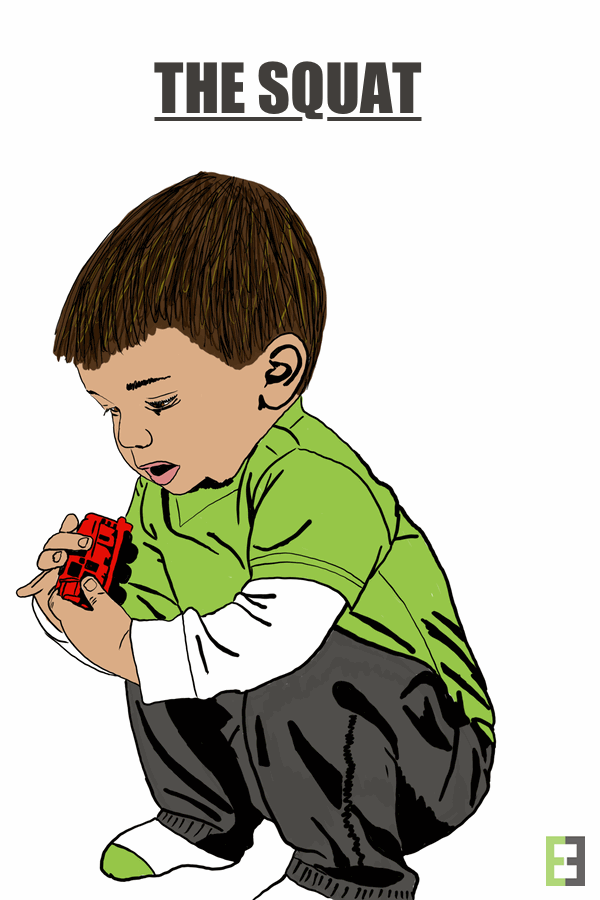
Landing with a 'straight leg' is problematic because the shape of the knee joint is such, that, when extended, only has support from the ligaments. The lack of muscular involvement provides less energy absorption and thus higher ground reaction forces at the knees [6]. The ACL, in particular, is at greater risk during knee extension [2]. Woman are 4-5 times more likely to suffer from knee injuries than men. A study designed to try and explain why a woman is at greater risk found that they land with much straighter/extended limbs than men. The authors hypothesized that females, having less muscle mass than men, caused them to rely more on their passive tissues (ligament) as opposed to their active tissues (muscles) for knee stability. This compensation is called ‘ligament dominance’ [7]. According to another study, landing with a flexed leg reduced forces at the knee by 11-20.5% [6].
Fix:
Building muscle mass around the legs is preserving the connective tissue. The more supporting material built around any framework would stabilize the entire structure. Squatting is, of course, foundational to leg training. Watch babies; who innately understand that they should squat all the time.
Cause:
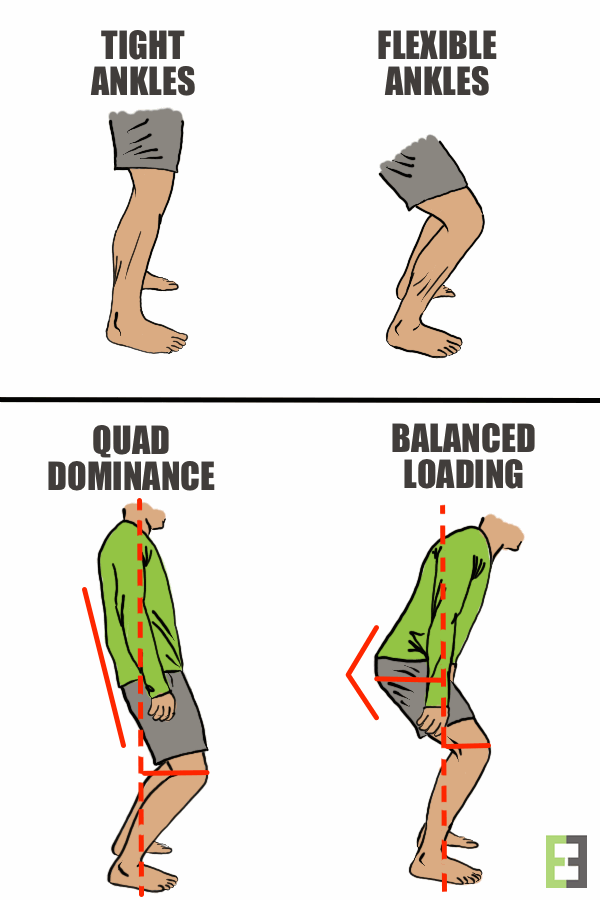
Another cause for landing with ‘straight legs’ is through having tight ankles [11]. For the knee to track forward and bend upon impact, the ankle has to flex too. If this downstream joint is unable to do so, then the leg will remain extended. A study found that 52%-60% of patients who developed ACL injuries also had previous ankle sprains. You see how inter-connected all the segments of our body are.
Fix:
Work on increasing flexibility/mobility in the ankle joints. A squat is an excellent tool for improving ankle range of motion. A sign that you have chronically tight ankles is if your heels start lifting off the ground at the bottom of a squat. Focus on keeping those heels down. Famous physical therapist, Dr. Kelly Starrett says that all humans should have the capacity to sit in the bottom of a squat for 10 minutes without pain. Try it and comment how you feel below.
Cause:
There is a caveat to landing with a flexed leg. If the hips don't flex at the same time, then, knee extensor moments become too large, causing quad dominance. Too much quad involvement pulls the knee joint forward (tibial translation), again, stressing the ligaments. Eliminating the flaw requires the subsequent hip flexion to stimulate the hamstrings and pull the knee backward at the same time. This ‘balancing act’ involving the muscles on either side of the leg is thus essential in maintaining a stable knee position [6][9].
Fix:
Awareness comes in to play yet again here. Making a conscious effort to soften the hips upon impact with the ground will involve them more. Practice jumping off a platform and landing as quietly as possible. The natural tendency will be to drop into a squat after impact. This reaction proves that a soft landing requires knee and hip flexion simultaneously.
Increasing the hamstring strength to match the quadriceps also ensures more stability in the leg overall [9].
Downstream link to the knee
Mechanism:
Whether we are landing after a jump or striking the ground while running, the part of the foot that hits the ground first has a significant effects upstream at the knees. A study done on basketball players, found that those who landed on their heels had more knee injuries than other players who consistently landed on the forefoot [8]. By falling on the front of the foot, the activated soleus muscle and Achilles tendon stabilizes the shin bone further and limits unwanted movement at the knee joint. Studies which support this phenomenon found that mid and forefoot striking runners had lower collision forces transmitted through their legs and thus suffered from fewer knee injuries [14].
Cause:
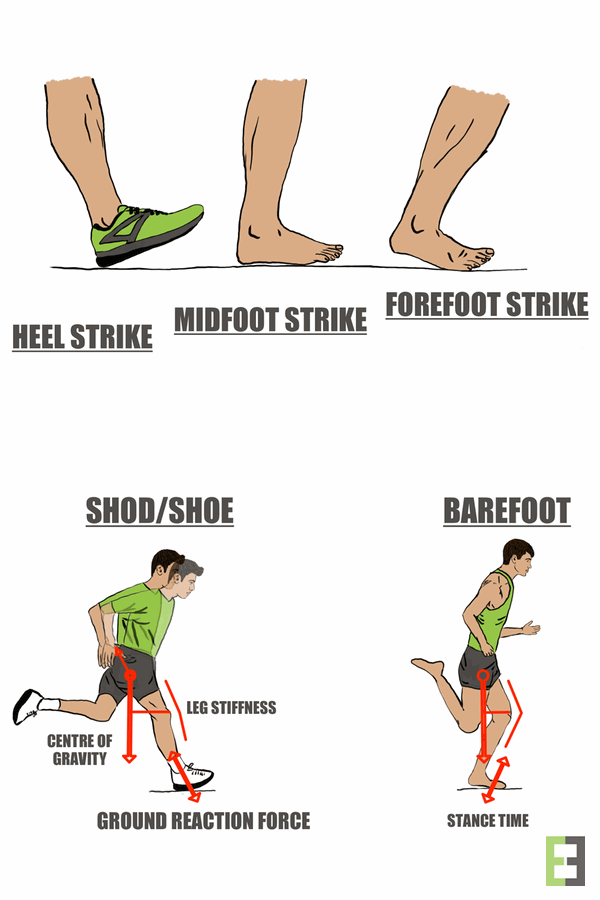
Modern footwear play a role in how we contact the ground. Thick, cushioned soles lower our sensory feedback mechanism which increases the likelihood of heel striking. Take off your shoes, jump and land on the heels first. You will feel a sharp pain through your whole body. Now put on a pair of cushy trainers and do the same. Did you sense a difference? Comment below.
During a 12 week barefoot running study, the participants had a 44,5% reduction in heel striking patterns [15]. The athlete's style of movement changed because they had a better sense of their interactions with the ground.
Fix:
It’s obvious, take off your shoes and spend time barefoot. If it was good enough for our ancestors, then it can be for us too. But if traveling barefoot is just not ‘cool’ enough for you then consider minimalist shoes which have a flat, reduced sole. I like All-stars (lean ox model) for casual wear and Vibram for sport.
Conclusion:
Over and above the inconveniences of pain, the chance of developing Osteoarthrosis in the legs increases by 50-100% after suffering a knee trauma [1].
Another noteworthy fact is the potential severity of knee injuries in Kids and the elderly. These fragile individuals have bones which are weaker, and if the ligaments pull hard enough, avulsions can occur, where pieces of bone are broken away by the connective tissue! [4]
So guys, analyse your movements, identify the errors in them and make the relevant fixes. Please don’t add to the growing statistics of knee injuries out there.
If you enjoyed this post, consider up-voting and follow me @exercisinghealth for more.
Thanks for your time!
Bibliography
*All pictures were created by @exercisinghealth
